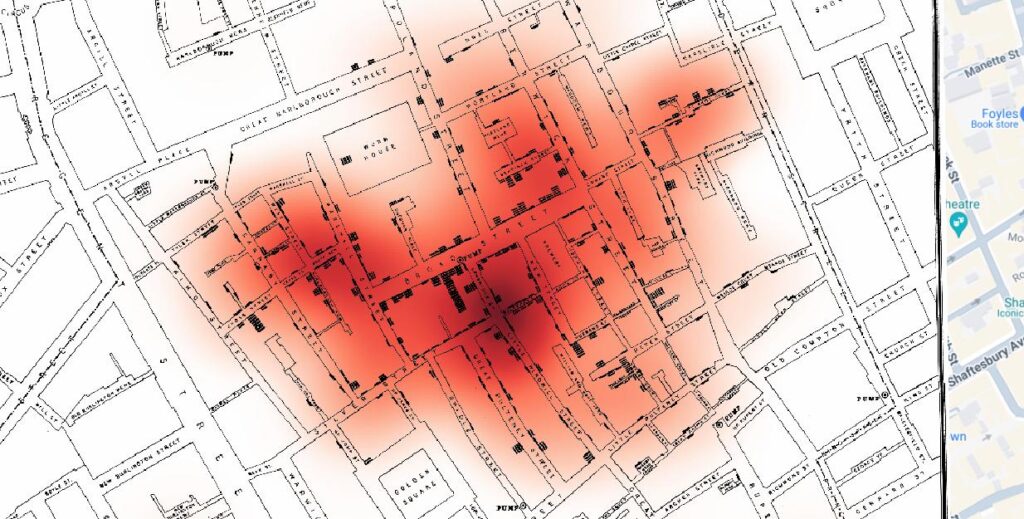Geoff Cunfer in “Paster and Plows” provides context to the ecological history of North Dakota and compares it to the agricultural transformation that occurred in Kansas, highlighting how they are both similar and different through their timing because of unique. environmental factors. In both states, this transformation occurred at a fast pace, however in North Dakota it occurred later and more rapidly than in Kansas. The shift from cropland to pasteurized land in North Dakota can be explained through constraints from temperature, rainfall, and the quality of the soil. Even with federal incentives and high crop prices, the small surges in cropland expansion were not sustainable due to these outlined environmental limitations. Below is a map by Henry Gannett from 1903 which depicts the wheat per square mile across much of the midland plains region of the United States.


Table 2.3 shows the Great Plains land area in crops and grassland and by examining it we can begin to see some of the patterns Cunfer describes. In 1935 we see the peak of Cropland and the lowest level of Grassland. This can be explained through the stability of land use patterns in the Great Plains as the amount of rainfall, temperature, soil quality, and level of crop rotation and overplanting greatly impact the amount of land usable for crops. In the case of 1935, it seems as though the natural conditions were stable for crop use however by 1940, a drought occurred, causing the use of Grassland to increase.

Finally, the above image shows the percentage of total county area not plowed from 1880 to 1920. This provides a visualization of the idea of stability of land use as one can see the changes over time in the amount of Grassland in the Great Plains. Cunfer highlights the importance of understanding the agricultural and natural history of a place in order to show how the varying environmental factors shape the land-use patterns, such as he did in the case of North Dakota.
Works Cited:
“156. Wheat/Sq. Mile.” 156. Wheat/Sq. Mile. – David Rumsey Historical Map Collection, www.davidrumsey.com/luna/servlet/detail/RUMSEY~8~1~32209~1151551:156–Wheat-sq–mile-?sort=pub_list_no_initialsort%2Cpub_list_no_initialsort%2Cpub_list_no_initialsort%2Cpub_list_no_initialsort&qvq=w4s%3A%2Fwhat%2FAtlas%2BMap%2FStatistical%2BAtlas%2FAgriculture%2Fwhere%2FUnited%2BStates%3Bsort%3Apub_list_no_initialsort%2Cpub_list_no_initialsort%2Cpub_list_no_initialsort%2Cpub_list_no_initialsort%3Blc%3ARUMSEY~8~1&mi=28&trs=71. Accessed 10 Mar. 2024.
Cunfer. Steppingintothemap, steppingintothemap.com/mappinghistory/wp-content/uploads/2018/01/S-Simon-Winchester-The-Map-that-Changed-the-World-11-26-121-162.-1.pdf. Accessed 10 Mar. 2024.
















